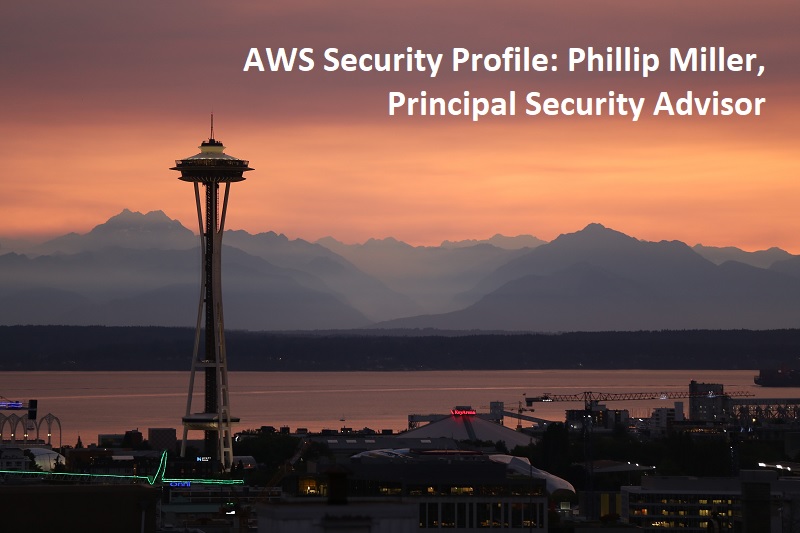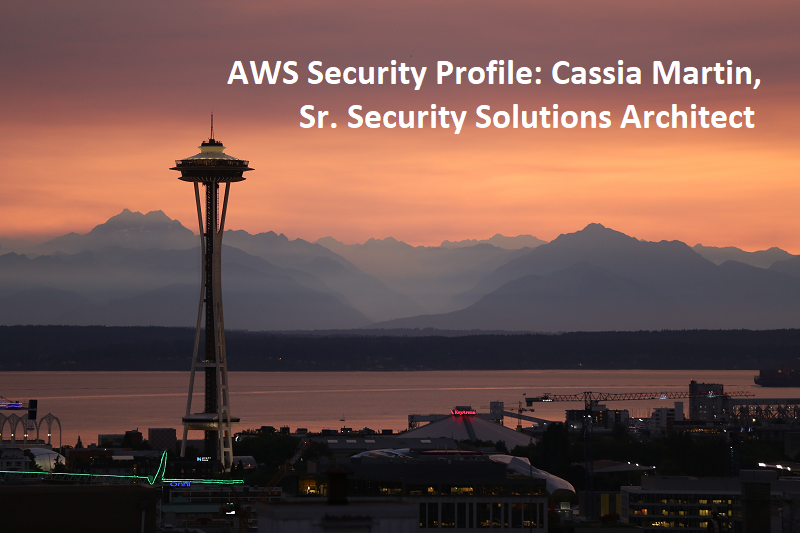Post Syndicated from Marta Taggart original https://aws.amazon.com/blogs/security/reinvent-new-security-sessions-launching-soon/
Where did the last month go? Were you able to catch all of the sessions in the Security, Identity, and Compliance track you hoped to see at AWS re:Invent? If you missed any, don’t worry—you can stream all the sessions released in 2020 via the AWS re:Invent website. Additionally, we’re starting 2021 with all new sessions that you can stream live January 12–15. Here are the new Security, Identity, and Compliance sessions—each session is offered at multiple times, so you can find the time that works best for your location and schedule.
Protecting sensitive data with Amazon Macie and Amazon GuardDuty – SEC210
Himanshu Verma, AWS Speaker
Tuesday, January 12 – 11:00 AM to 11:30 AM PST
Tuesday, January 12 – 7:00 PM to 7:30 PM PST
Wednesday, January 13 – 3:00 AM to 3:30 AM PST
As organizations manage growing volumes of data, identifying and protecting your sensitive data can become increasingly complex, expensive, and time-consuming. In this session, learn how Amazon Macie and Amazon GuardDuty together provide protection for your data stored in Amazon S3. Amazon Macie automates the discovery of sensitive data at scale and lowers the cost of protecting your data. Amazon GuardDuty continuously monitors and profiles S3 data access events and configurations to detect suspicious activities. Come learn about these security services and how to best use them for protecting data in your environment.
BBC: Driving security best practices in a decentralized organization – SEC211
Apurv Awasthi, AWS Speaker
Andrew Carlson, Sr. Software Engineer – BBC
Tuesday, January 12 – 1:15 PM to 1:45 PM PST
Tuesday, January 12 – 9:15 PM to 9:45 PM PST
Wednesday, January 13 – 5:15 AM to 5:45 AM PST
In this session, Andrew Carlson, engineer at BBC, talks about BBC’s journey while adopting AWS Secrets Manager for lifecycle management of its arbitrary credentials such as database passwords, API keys, and third-party keys. He provides insight on BBC’s secrets management best practices and how the company drives these at enterprise scale in a decentralized environment that has a highly visible scope of impact.
Get ahead of the curve with DDoS Response Team escalations – SEC321
Fola Bolodeoku, AWS Speaker
Tuesday, January 12 – 3:30 PM to 4:00 PM PST
Tuesday, January 12 – 11:30 PM to 12:00 AM PST
Wednesday, January – 7:30 AM to 8:00 AM PST
This session identifies tools and tricks that you can use to prepare for application security escalations, with lessons learned provided by the AWS DDoS Response Team. You learn how AWS customers have used different AWS offerings to protect their applications, including network access control lists, security groups, and AWS WAF. You also learn how to avoid common misconfigurations and mishaps observed by the DDoS Response Team, and you discover simple yet effective actions that you can take to better protect your applications’ availability and security controls.
Network security for serverless workloads – SEC322
Alex Tomic, AWS Speaker
Thursday, January 14 -1:30 PM to 2:00 PM PST
Thursday, January 14 – 9:30 PM to 10:00 PM PST
Friday, January 15 – 5:30 AM to 6:00 AM PST
Are you building a serverless application using services like Amazon API Gateway, AWS Lambda, Amazon DynamoDB, Amazon Aurora, and Amazon SQS? Would you like to apply enterprise network security to these AWS services? This session covers how network security concepts like encryption, firewalls, and traffic monitoring can be applied to a well-architected AWS serverless architecture.
Building your cloud incident response program – SEC323
Freddy Kasprzykowski, AWS Speaker
Wednesday, January 13 – 9:00 AM to 9:30 AM PST
Wednesday, January 13 – 5:00 PM to 5:30 PM PST
Thursday, January 14 – 1:00 AM to 1:30 AM PST
You’ve configured your detection services and now you’ve received your first alert. This session provides patterns that help you understand what capabilities you need to build and run an effective incident response program in the cloud. It includes a review of some logs to see what they tell you and a discussion of tools to analyze those logs. You learn how to make sure that your team has the right access, how automation can help, and which incident response frameworks can guide you.
Beyond authentication: Guide to secure Amazon Cognito applications – SEC324
Mahmoud Matouk, AWS Speaker
Wednesday, January 13 – 2:15 PM to 2:45 PM PST
Wednesday, January 13 – 10:15 PM to 10:45 PM PST
Thursday, January 14 – 6:15 AM to 6:45 AM PST
Amazon Cognito is a flexible user directory that can meet the needs of a number of customer identity management use cases. Web and mobile applications can integrate with Amazon Cognito in minutes to offer user authentication and get standard tokens to be used in token-based authorization scenarios. This session covers best practices that you can implement in your application to secure and protect tokens. You also learn about new Amazon Cognito features that give you more options to improve the security and availability of your application.
Event-driven data security using Amazon Macie – SEC325
Neha Joshi, AWS Speaker
Thursday, January 14 – 8:00 AM to 8:30 AM PST
Thursday, January 14 – 4:00 PM to 4:30 PM PST
Friday, January 15 – 12:00 AM to 12:30 AM PST
Amazon Macie sensitive data discovery jobs for Amazon S3 buckets help you discover sensitive data such as personally identifiable information (PII), financial information, account credentials, and workload-specific sensitive information. In this session, you learn about an automated approach to discover sensitive information whenever changes are made to the objects in your S3 buckets.
Instance containment techniques for effective incident response – SEC327
Jonathon Poling, AWS Speaker
Thursday, January 14 – 10:15 AM to 10:45 AM PST
Thursday, January 14 – 6:15 PM to 6:45 PM PST
Friday, January 15 – 2:15 AM to 2:45 AM PST
In this session, learn about several instance containment and isolation techniques, ranging from simple and effective to more complex and powerful, that leverage native AWS networking services and account configuration techniques. If an incident happens, you may have questions like “How do we isolate the system while preserving all the valuable artifacts?” and “What options do we even have?”. These are valid questions, but there are more important ones to discuss amidst a (possible) incident. Join this session to learn highly effective instance containment techniques in a crawl-walk-run approach that also facilitates preservation and collection of valuable artifacts and intelligence.
Trusted connects for government workloads – SEC402
Brad Dispensa, AWS Speaker
Wednesday, January 13 – 11:15 AM to 11:45 AM PST
Wednesday, January 13 – 7:15 PM to 7:45 PM PST
Thursday, January 14 – 3:15 AM to 3:45 AM PST
Cloud adoption across the public sector is making it easier to provide government workforces with seamless access to applications and data. With this move to the cloud, we also need updated security guidance to ensure public-sector data remain secure. For example, the TIC (Trusted Internet Connections) initiative has been a requirement for US federal agencies for some time. The recent TIC-3 moves from prescriptive guidance to an outcomes-based model. This session walks you through how to leverage AWS features to better protect public-sector data using TIC-3 and the National Institute of Standards and Technology (NIST) Cybersecurity Framework (CSF). Also, learn how this might map into other geographies.
I look forward to seeing you in these sessions. Please see the re:Invent agenda for more details and to build your schedule.
If you have feedback about this post, submit comments in the Comments section below.
Want more AWS Security how-to content, news, and feature announcements? Follow us on Twitter.



